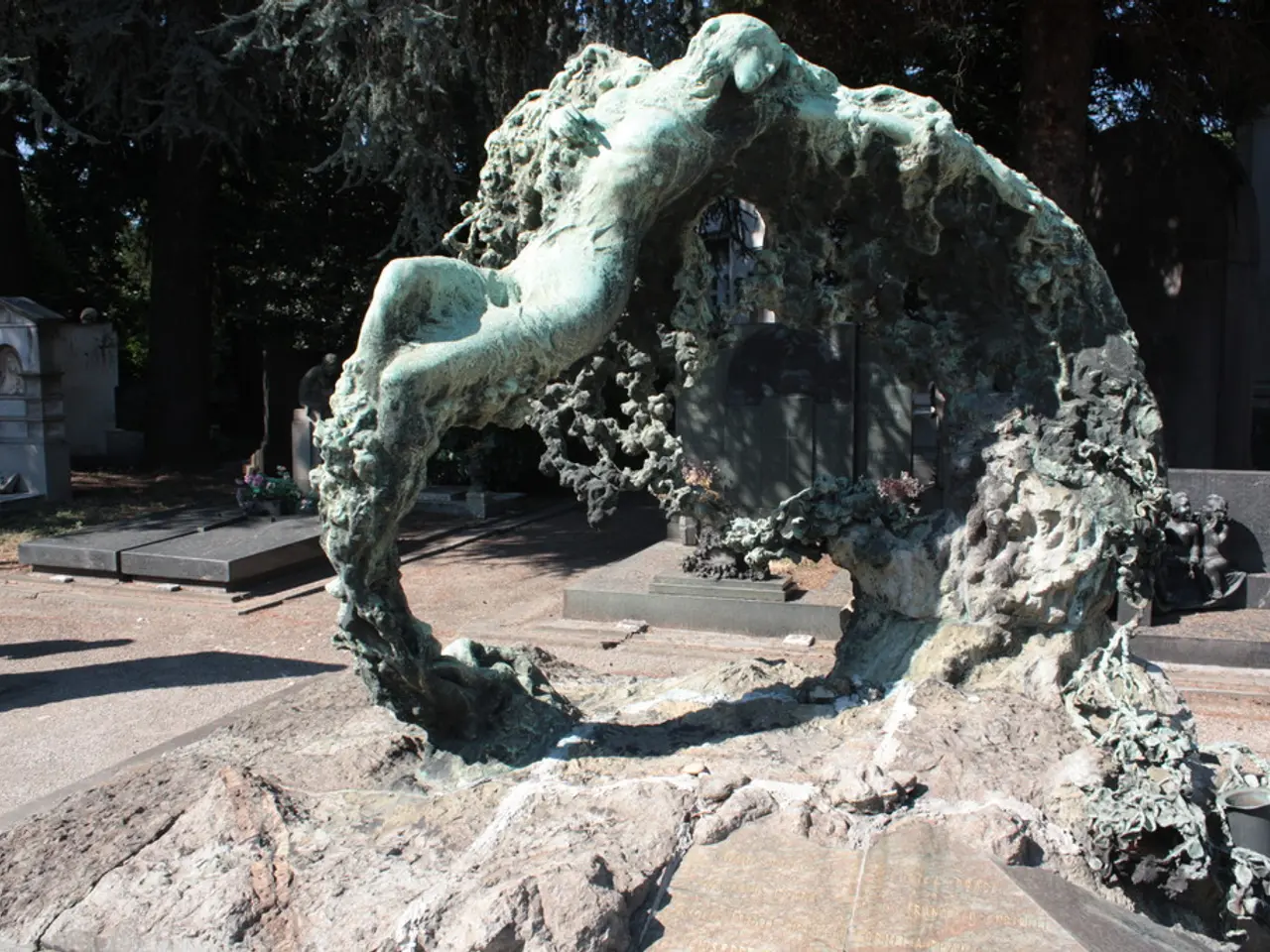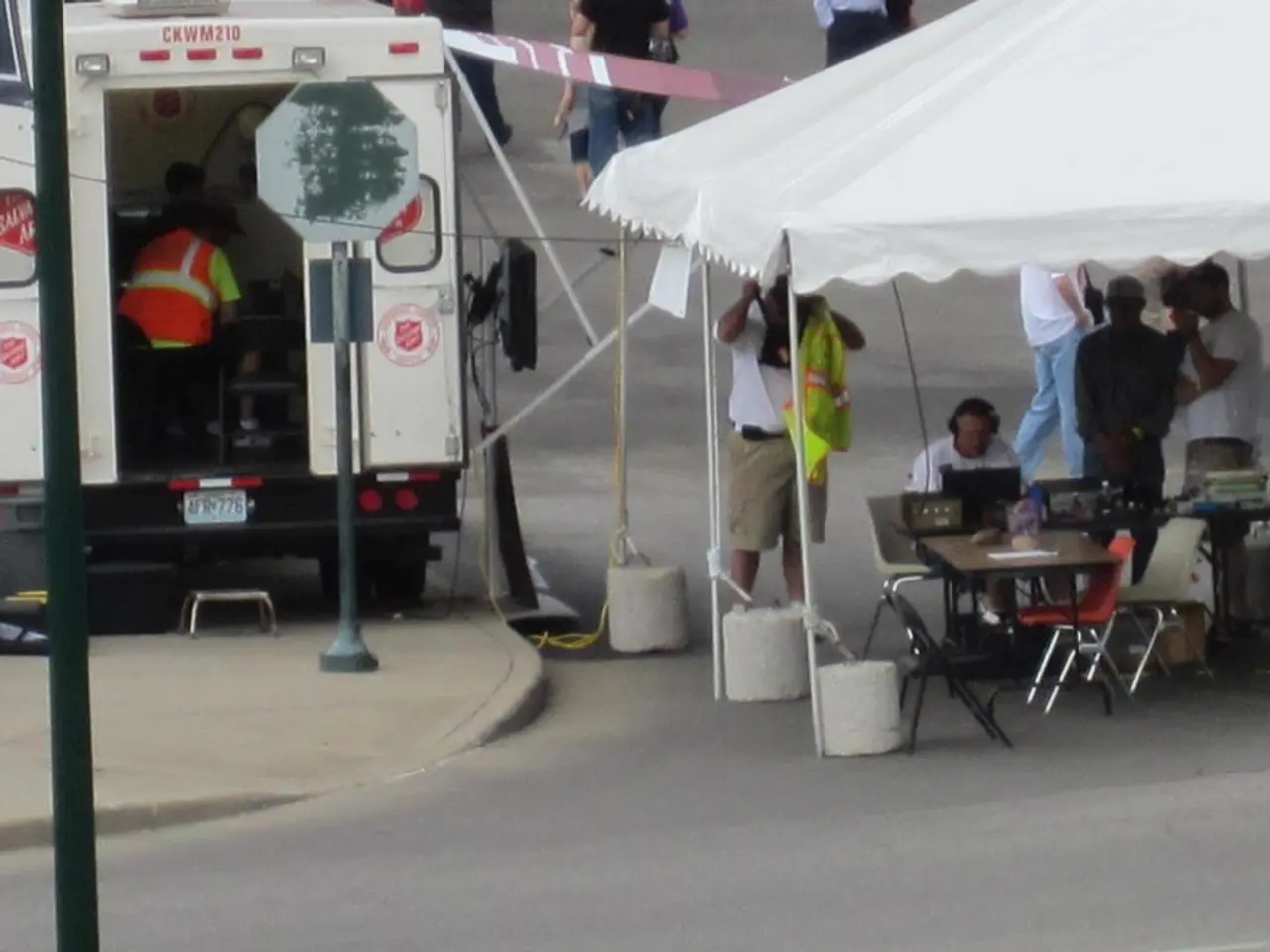Ahrensburg's Siek cemetery encounters issues due to wax figurines
The Siek cemetery in Stormarn, Germany, is currently closed for burials due to a unique preservation phenomenon that has been causing problems since 31 July 2022. Instead of typical decomposition, organic materials undergo a process where they become waxy and mummified, a phenomenon referred to as "natural mummification" or the creation of "wax mummies."
- High Groundwater Levels and Natural Mummification
The cemetery is located in an area with elevated groundwater that infiltrates burial sites. This, combined with certain soil chemistry, preserves bodies in an unusual way, causing the unusual mummification process.
- Preservation Concerns and Burial Ban
While historically such mummies might be of academic or historical interest, today this preservation disrupts normal cemetery practices. New burials can disturb these preserved remains, raising ethical, sanitary, and legal issues. To prevent such issues, authorities enforce a burial ban to avoid adding new graves where high groundwater would cause more wax mummies, complicating cemetery management and respecting the dignity of those already interred.
- Health and Legal Issues
Disturbing well-preserved bodies can lead to problematic situations, such as exposure to pathogens or legal concerns about the treatment of remains. As an alternative to removal and cremation or reburial, the corpses in the Siek cemetery have been buried on top of each other in multiple layers.
- Current Investigations and Future Outlook
Current soil investigations have revealed that the groundwater level is significantly higher than expected. Experts believe that there will be no more burials in the Siek cemetery in the long term.
- Uncertainty for Relatives
The proceedings cause uncertainty for the relatives of those buried in the Siek cemetery, as the "old" corpses, typically reassigned after 25 years, are not decomposing and would require costly cremation or reburial if removed.
- Significant Costs for the Cemetery Operator
The cemetery operator is facing significant costs due to the unique circumstances at the Siek cemetery. The pond at the cemetery was filled in 1972, but the high groundwater level continues to cause a number of problems. Some graves in the cemetery have several floors due to the mummification process.
In short, the burial ban at Siek cemetery is a protective measure responding to the unique natural conditions that create wax mummies, ensuring proper respect for the dead and safe management of the cemetery grounds.
- The unusual mummification process at Siek cemetery, also known as 'natural mummification', is attributed to the elevated groundwater levels and specific soil chemistry, which essentially causes organic materials to become waxy, become a concern in the field of 'science' and 'health-and-wellness'.
- Understanding the 'medical-conditions' associated with the 'natural mummification' is crucial to ensure effective management and proper burial practices. The preservation phenomenon raises ethical, sanitary, and legal issues, affecting the 'health-and-wellness' of the living as well as the deceased.




